Will the New Person Fit in Funny
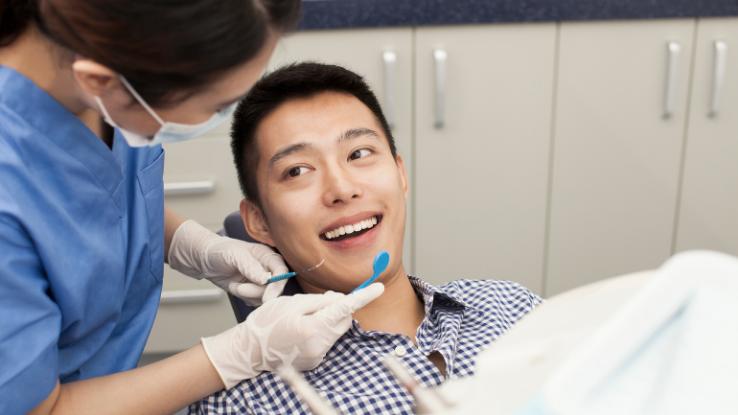
Do you have crooked teeth or teeth with inconsistent spaces between them? Whether you're an adult or a teenager, you don't need to settle for a less-than-perfect smile. From traditional metal and wire braces to the ever-popular invisible aligners by Invisalign, there are plenty of methods for getting straighter, more evenly spaced, and healthier teeth. Which option is best for you? We're here to help you decide.
As you probably know, braces straighten and reposition misaligned and inconsistently spaced teeth through pressure. That pressure is applied by archwires, which are connected to brackets cemented onto your teeth. Traditionally, metal brackets are cemented to the front of your teeth and remain there for the entirety of your treatment plan.
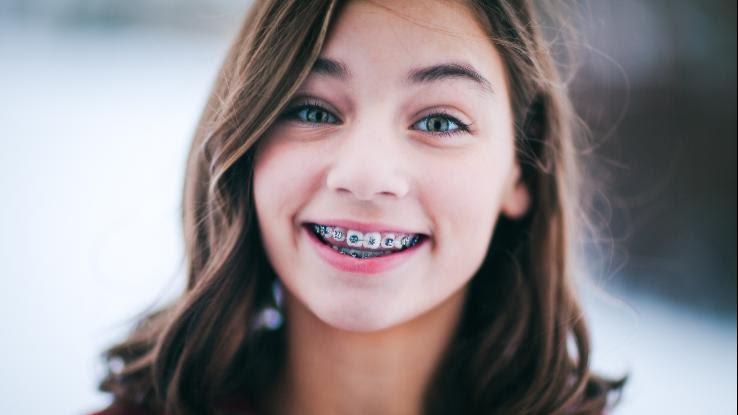
If additional pressure is required, orthodontists may also use appliances such as headgear and rubber bands to further manipulate your teeth into position. Braces stay on your teeth from the beginning to the end of your orthodontic treatment plan. The earliest forms of braces were made in 1819, though the term "braces" wasn't used until the 1900s.
What Is Invisalign?
Invisalign is a system manufactured by a California company called Align Technology. This method does not use metal brackets and wires like braces, but, instead, employs aligners made from a patented clear thermoplastic material. Those aligners slip over the top of your teeth and fit against them quite snugly.
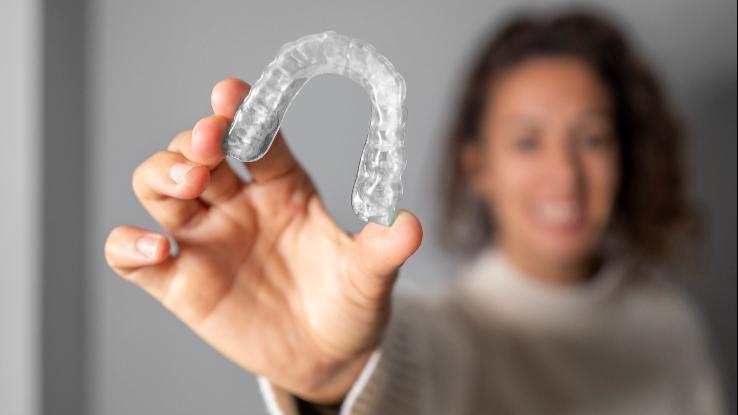
The aligners are made from imaging data captured by Invisalign's iTero 3D scanner. Using that information, Invisalign crafts a series of slightly different aligners. You wear each aligner for a couple of weeks at a time before switching to the next aligner. As you shift from one aligner to the next, your teeth are gradually shifted into their best position.
What Are the Advantages and Disadvantages of Invisalign?
There are a significant number of advantages of wearing Invisalign compared to traditional braces. Here are several advantages and, on the flip side, a couple of disadvantages.
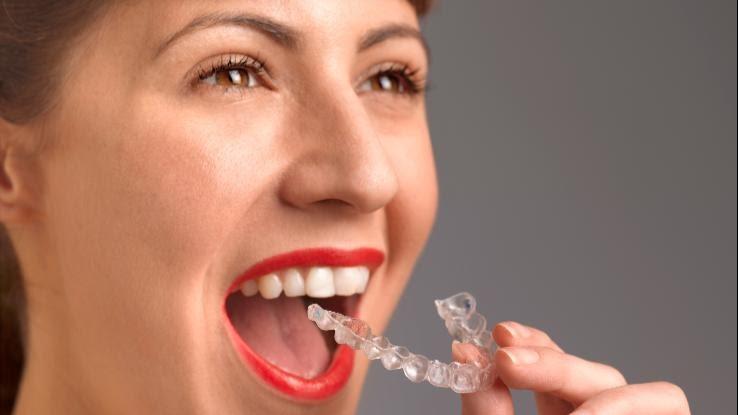
Comfort and Duration of Treatment:
Invisalign's aligners are removable. And transparent. You'll be able to eat and keep clean without sacrificing your favorite meals or changing your routines. And you can keep your orthodontic treatment quite private, should you prefer. Additionally, these aligners don't have protruding metal or wayward parts that will poke and threaten to injure your cheeks, lips or gums. In fact, the pressure imposed by Invisalign is gentler than that placed on your teeth by braces, meaning you're likely to experience less discomfort in general.
Thanks to Invisalign's digital imaging system, and that system's ability to simulate your progress and final results, its treatment plan is predictable. Your follow-up appointments will be shorter and fewer, too, since adjustments won't be necessary — nor will they have to remove wires or take extra care in cleaning between the orthodonture. Instead, you'll simply move from aligner to aligner on a predetermined schedule.
Speaking of your schedule, Invisalign treatment plans are often shorter than treatment plans with braces, though that will vary depending on the current position of your teeth and the complexity of the changes that need to be made.
Cost:
The average cost of Invisalign is comparable to the cost of orthodontic work with traditional braces. An average Invisalign treatment plan — keeping in mind that every treatment plan and patient is unique — will cost between $3,000 to $5,000. The variation will depend on how many aligners will be required to accomplish your goals. Invisalign does offer several different packages that vary in cost, including Invisalign Full; Invisalign Lite (14 aligners for mild malocclusion issues); Invisalign Express 10 (for crowding and spacing issues); and Invisalign Express 5 and i7 (for minor crowding and spacing issues).
Accountability and Limits:
There are three main downsides to Invisalign. First, Invisalign's aligners are removable. That sounds like an advantage, and it is when it comes to eating and cleaning your teeth. But the temptation to remove them — and not wear them — will be strong. Someone without the discipline to wear their aligners for 22 hours daily may not be a good candidate for Invisalign.
Apart from the importance of that discipline, physical maturity is also important. Invisalign is not appropriate for children or teens whose permanent teeth have not yet emerged. The third, and perhaps more significant, disadvantage of Invisalign is that it may not be appropriate for the most complex misalignment and spacing issues.
Whether Invisalign, braces or some other option is best for the condition of your teeth will be determined by a dentist who has reviewed your health, dental images, the current alignment of your teeth, your age and your goals.
What Are the Advantages and Disadvantages of Braces?
Here are three advantages of traditional braces and, oppositely, three disadvantages of braces.
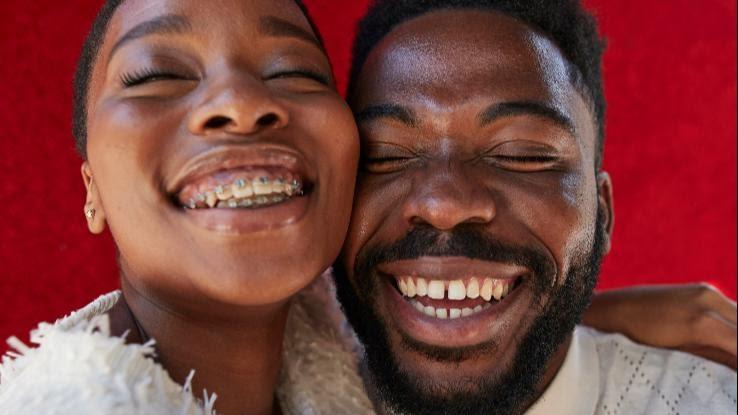
Advantages:
Traditional braces are an appropriate treatment option for almost all patients, including children as young as seven years old and teenagers.
With braces, orthodontists have access to a wide range of additional orthodontic appliances such as headgear, rubber bands, space maintainers and palate expanders. This wide variety of additional appliances makes braces a particularly versatile solution for a wide range of orthodontic issues, particularly issues affecting children.
Braces can be a less expensive option for straightening your teeth than Invisalign, though every treatment plan is different. While the average cost of braces typically falls between $5,000 and $6,000, the total cost can fall within a wider range between $3,000 and $10,000 depending on your medical history, the condition of your teeth, the type of braces you're wearing and the complexity of your situation.
Disadvantages:
There are certainly downsides to traditional braces compared to Invisalign. First, the brackets and wires you'll wear during your treatment plan are not removable. You'll wear them non-stop for the full length of your treatment plan — potentially for years.
Keeping your teeth (and braces) clean can be difficult with braces, meaning there are some foods you might need to give up. Partly for this reason, your dental appointments during your braces-based treatment plan will be longer since your dentist will remove the archwires and clean your teeth while also making all the necessary adjustments and repairs.
Finally — and this is probably the most obvious and significant disadvantage — braces are glaringly obvious in your mouth. You won't be able to keep the fact that you're wearing braces a secret. Having said that, there are more subtle options available now, including ceramic and nearly tooth-colored brackets. There are even braces you can wear on the inside rather than the outside of your teeth (lingual braces). Unfortunately, though perhaps predictably, those options will place the total cost at the higher end of the price range.
Which Is a Better Fit for You?
Mature patients with all the discipline and commitment required to glean the benefits of Invisalign may find that Invisalign is the most comfortable option, so long as their goals align with the product's capabilities. But if you're a parent looking for options for a child — or if you have more complex orthodontic issues — Invisalign may not be the best option. In those cases, traditional braces may be the best course of action.

The best way to find out is to make an appointment with a qualified dentist familiar with your circumstances, needs and goals.
Resource Links:
- "Understanding Your Treatment Options" via American Association of Orthodontists
- "Should I Get Invisalign?" via Invisalign
Source: https://www.symptomfind.com/healthy-living/invisalign-braces-better-fit?utm_content=params%3Ao%3D740013%26ad%3DdirN%26qo%3DserpIndex
0 Response to "Will the New Person Fit in Funny"
Postar um comentário